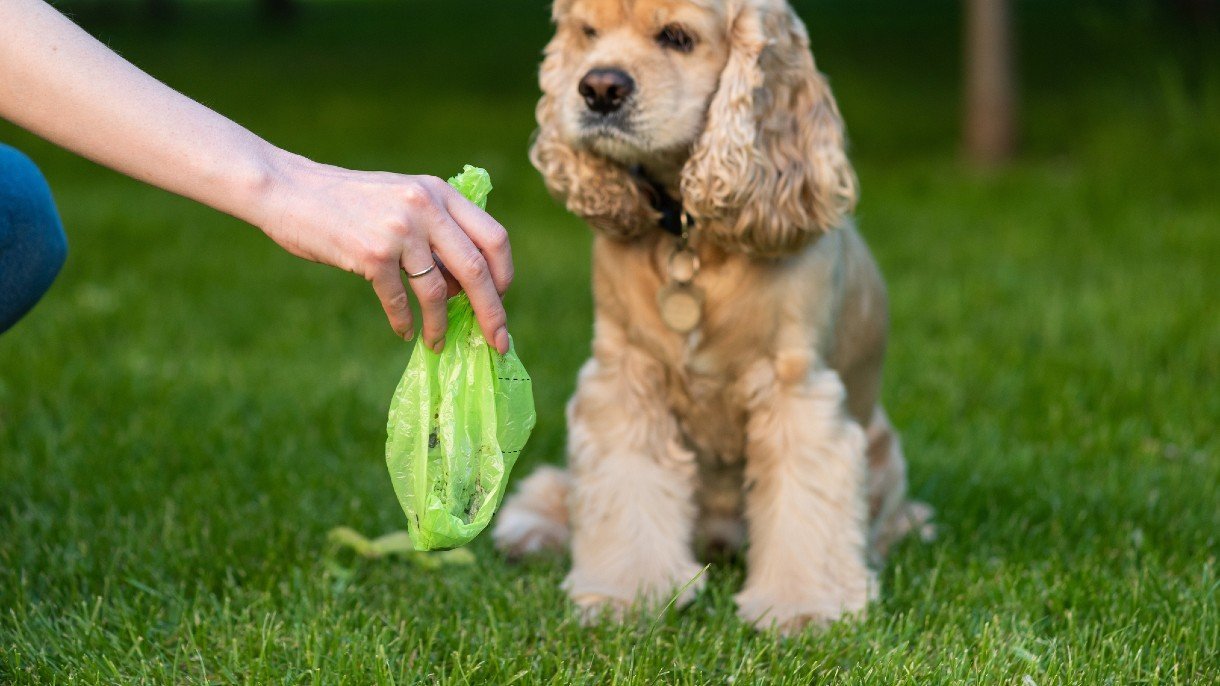How Long Do Biodegradable Dog Poop Bags Take to Decompose?

Dog poop bags are a menace.
Whether they’re floating around catching in trees or being dropped into a bush because someone didn’t want to continue a dog walk with it in their hand, these bags can get everywhere. They’re harmful to the environment when littered or when disposed of properly.
Thankfully, there are a lot of biodegradable and compostable replacement products out there to help combat the waste generated by these single-use bags.
Much like carrier bags, plastic dog poop bags can accumulate quickly in landfills, with One Green Planet estimating that a dog pooping three times a day can generate 1000 bags a year.
A biodegradable dog poop bag should take up to a year to decompose, but landfills slow this decomposition massively. They can even take thousands of years to break down thanks to mummification.
What are biodegradable dog poop bags?
The Federal Trade Commission’s Guides for the Use of Environmental Marketing Claims (or Green Guides) says that bags advertising themselves as “biodegradable” or “compostable” should break down into their natural components within one year of disposal.
In 2015, the FTC sent out 20 letters to manufacturers and marketers who deceptively claimed their dog poop bags were biodegradable or compostable. The wording on product packaging can still be deceptive though organizations like the FTC regulate marketing claims.
Most biodegradable bags will contain some plastic and use chemicals to break down the bag, though this doesn’t guarantee them being eco-friendly or actually biodegradable, especially if they break up into microplastics.
The best biodegradable dog poop bags are made from vegetable matter like corn starch. This makes them more expensive but far more environmentally friendly. Even so, bags made from organic matter often need to be in the right conditions to decompose fully.
When sent to landfills, even biodegradable dog poop bags might undergo mummification. The garbage is compressed together so tightly that a lack of oxygen results in the waste mummifying, causing it to decompose even more slowly.
Rover advises on some of the best biodegradable dog poop bags and how to dispose of them properly.
Eco-friendly ways to dispose of dog poop
While biodegradable dog poop bags are a much better alternative to plastic bags, there are other more eco-friendly ways to dispose of dog poop.
When I purchased 300 biodegradable bags for the first time, I worried about how much waste I’d be generating because they were so large for my two small dogs. After a week of struggling to pick up multiple poops with the same bags, I hopped back on Amazon and bought a pooper scooper.
Using the scooper allowed me to use one bag for several days or more. Less than a year’s worth of bags has transformed into well over a year – whenever I take a bag out on a dog walk, I bring the bag out into the yard and use that for yard poop too.
It’s not always perfect, but it hits one of the big R’s – Reuse!
Other eco-friendly ways to dispose of dog poop include:
- Flushing – some states allow you to flush dog poop down the toilet but you have to check local laws first. Pathogens in dog waste can be harmful, especially if water treatment facilities are unable to filter them out.
- Burying poop – as long as you bury the dog poop at least five inches below ground level and away from any water sources or gardens, this is a safe alternative if you have enough land.
- Dog waste composting bin – you shouldn’t add dog poop to ordinary composting piles or bins! But you can get a composting bin for dog waste to use provided they’re nowhere near gardens or food cultivation.
- Pet waste removal – there are composting facilities and pet waste removal companies who will take your dog poop away and dispose of it properly for you.
